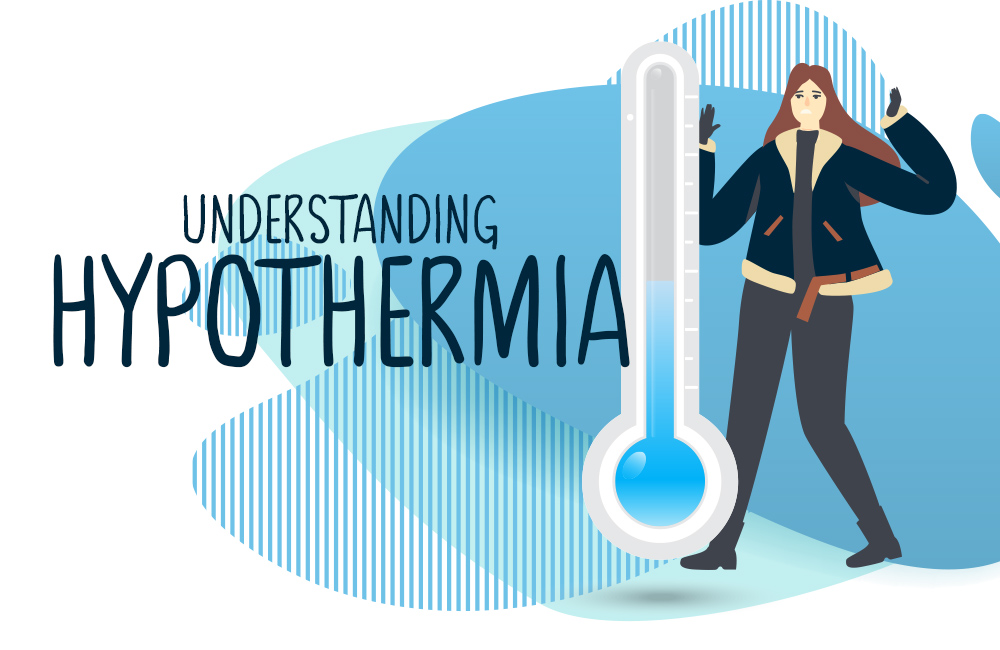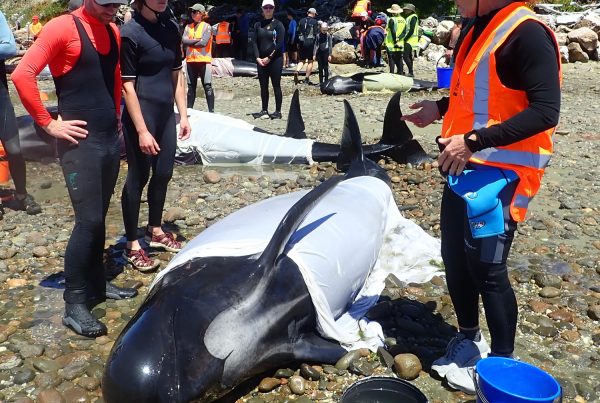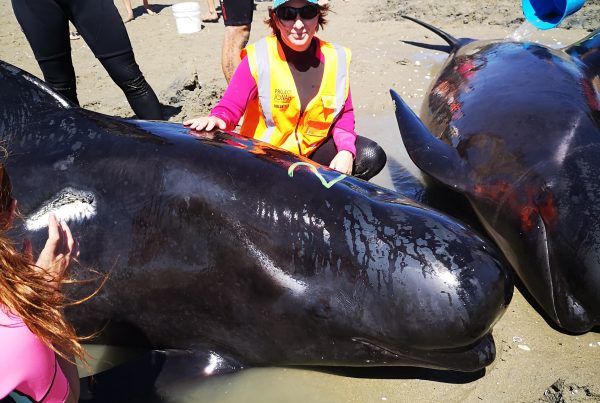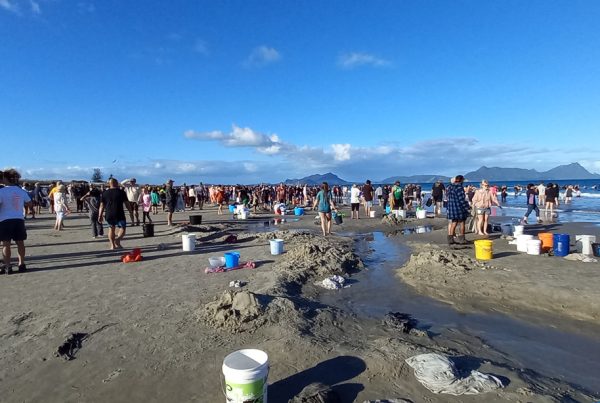
Hypothermia is a medical term describing a lowering of the body’s core temperature below 35ºC (95 ºF). This potentially dangerous condition can be caused by a variety of factors which may alter physical and mental performance, decision making, and in severe cases lead to death. So called “accidental hypothermia” is when a person experiences hypothermia unintentionally due to factors in the environment (exposure to cold).
How does hypothermia come into context with Project Jonah?
A great amount of our work is spent in the outdoors around New Zealand’s marine environments. Prolonged exposure to weather and water are significant risk factors for hypothermia even in summer and in milder climates. You can lose heat 20 to 30 times faster in water than in air. It is paramount for every team member to understand hypothermia and to recognise the symptoms early, in order to reduce risk and to prevent accidental incidents out in the field.
What is hypothermia?
Hypothermia can affect anybody and is caused when our body loses heat to the environment faster than it is able to absorb and generate it (thermogenesis). Thermoregulation and a normal body core temperature (between 36.5 ºC – 37.5 ºC) are absolute necessities to maintain homeostasis (our body’s ability to self-regulate and maintain biological stability), brain function, muscle function, and our vital organs.
A significant loss of body core temperature will lead to malfunction and eventual failure of bodily systems, causing physiological shock and death.
One of the main dangers with hypothermia is the fact that a person may not be aware of the condition at the time, or feel paradoxically comfortable (e.g. feeling of warmth), allowing the condition to progress undetected.
Basic pathophysiology; how does it work?
A small but crucial part of our brain is called the hypothalamus. It sits near the brain stem and is responsible for the regulation of certain bodily functions, including thermoregulation. During hypothermia, thermal receptors around our body recognise the drop of temperature causing the hypothalamus to initially increases metabolism, ventilation and cardiac output (increased blood flow) to maintain bodily functions.
The body will compensate and centralise blood flow from the peripheral blood vessels to the vital organs (cold induced sympathetic vasoconstriction).
Eventually the heat loss becomes so overwhelming that organ function further diminishes and the body’s ability to compensate fails, ultimately leading to death.
Signs & Symptoms
Hypothermia is classed into 3 stages and presentation (symptoms) can be approximately grouped along these stages. However its symptoms may look very different from individual to individual and can be situational.
Mild Hypothermia (35 ºC – 32 ºC)
- Shivering (body response to generate heat)
- Cold to touch
- Pale and blueish skin colour. Sometimes red skin (early stages)
- Increased heart rate (tachycardia) and increased breathing rate (tachypnoea)
- Lethargy, sluggish response
- Drowsiness
- Lack of coordination
- Excessive urination
Moderate Hypothermia (32 ºC – 28 ºC)
- Decreased or no longer shivering (critical sign)
- Feeling of warmth
- Decreased alertness/level of consciousness
- Slurred speech
- Slowed heart rate (Bradycardia), slowed breathing rate (Bradypnea), lowered blood pressure
- Muscle weakness and stiffness
- Lack of situational awareness
- Irrational behaviour
- Irritability
- Incontinence (from increased workload on the kidneys)
- Severe Hypothermia (below 28 ºC | life threatening)
Severe Hypothermia (below 28 ºC | life threatening)
- Unconscious/not responding
- Mild respiratory effort (may be hard to detect)
- Rigid muscle tone
- Severe bradycardia, possible irregular heart beat
- Hypotension (low blood pressure)
- Risk- and contributing factors
Risk- and contributing factors
- Lack of knowledge/environmental inexperience
- Inappropriate clothing
- Dehydration
- Malnutrition
- Prolonged environmental exposure
- Exhaustion (tolerance for cold diminishes when fatigued)
- Alcohol and drugs (inability to shiver, irrational feeling of warmth, lack of judgement)
- Medication (my affect body’s ability to thermoregulate)
- Overexertion
How to prevent hypothermia
- Understanding hypothermia and knowing its alarm sign (symptoms)
- Wear appropriate clothing (e.g. wetsuit, boots, sunhat, neoprene gloves)
- Reduce the time of environmental exposure
- Good fitness, well rested
- Hydration and healthy nutrition (increases ability to generate energy and compensate cold)
- Looking out for each other in the field and recognizing symptoms early
First Aid
The best treatment for hypothermia is to prevent it from happening.
It’s easy to get caught up in the situation and forget about the essentials of frequent hydration, nutrition and rest. Appropriate clothing for the environment is crucial and weather changes must be considered with careful planning and monitoring. Looking out for each other in the field will make all the difference. If you are with or find someone who is hypothermic…
- Call for help early (111)
- Gently get the person out of the environment (e.g. shelter, boat or cabin)
- Take off all wet clothing and replace with dry clothes, sleeping bag, blanket or similar
- Warm gently and carefully (do not rub as this could cause tissue damage)
- Heat packs can be applied centrally (e.g. by armpits or neck). Ensure that this does not burn the patient. Do not heat extremities (arms & legs) as this could cause very cold blood to rush back to the central organs and cause more damage.
- Offer a warm (not hot) drink if the person is conscious and able to swallow fully.
- If unconscious, place patient in side position
- Monitor symptoms and changes in condition.
- If unconscious and not breathing, perform CPR.
The Department of conservation (DOC) won’t let anyone take part in water based rescues without wearing a wetsuit and appropriate environmental protection. This is something we (Project Jonah) uphold and take seriously. Looking out for each other in the field will make all the difference, create a safer working environment and better outcomes for all around.
Blog post written by Andy Frankenschmidt for Project Jonah


